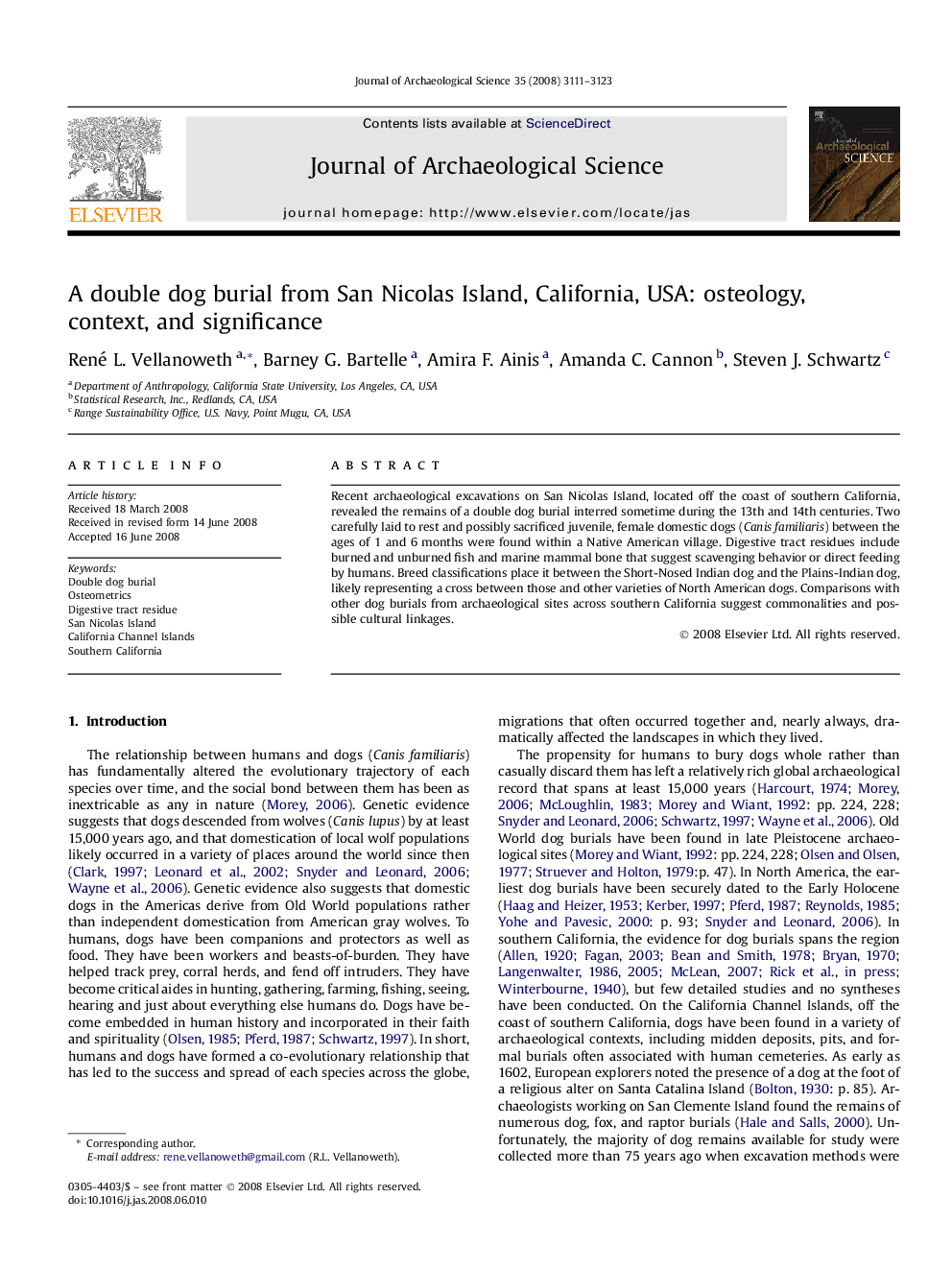| Article ID | Journal | Published Year | Pages | File Type |
|---|---|---|---|---|
| 1037207 | Journal of Archaeological Science | 2008 | 13 Pages |
Abstract
Recent archaeological excavations on San Nicolas Island, located off the coast of southern California, revealed the remains of a double dog burial interred sometime during the 13th and 14th centuries. Two carefully laid to rest and possibly sacrificed juvenile, female domestic dogs (Canis familiaris) between the ages of 1 and 6 months were found within a Native American village. Digestive tract residues include burned and unburned fish and marine mammal bone that suggest scavenging behavior or direct feeding by humans. Breed classifications place it between the Short-Nosed Indian dog and the Plains-Indian dog, likely representing a cross between those and other varieties of North American dogs. Comparisons with other dog burials from archaeological sites across southern California suggest commonalities and possible cultural linkages.
Related Topics
Physical Sciences and Engineering
Materials Science
Materials Science (General)
Authors
René L. Vellanoweth, Barney G. Bartelle, Amira F. Ainis, Amanda C. Cannon, Steven J. Schwartz,
